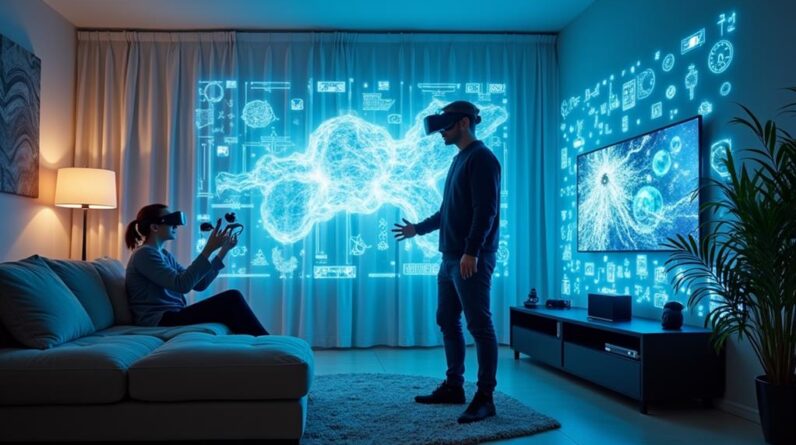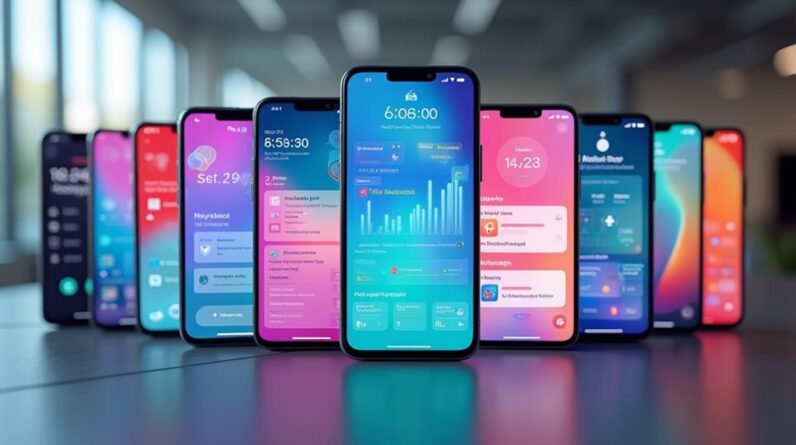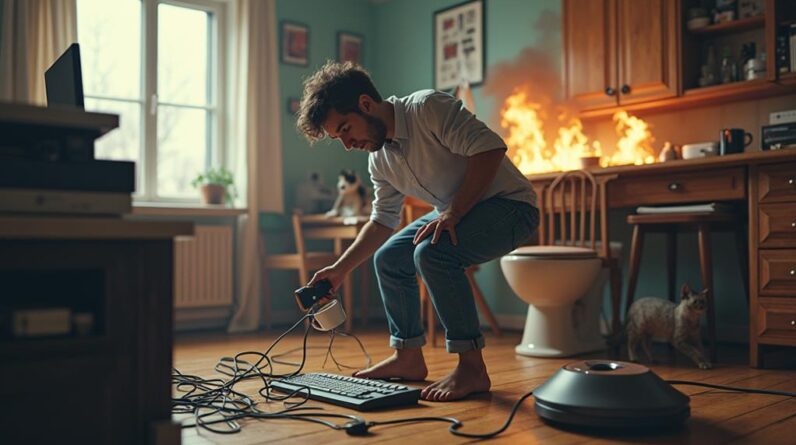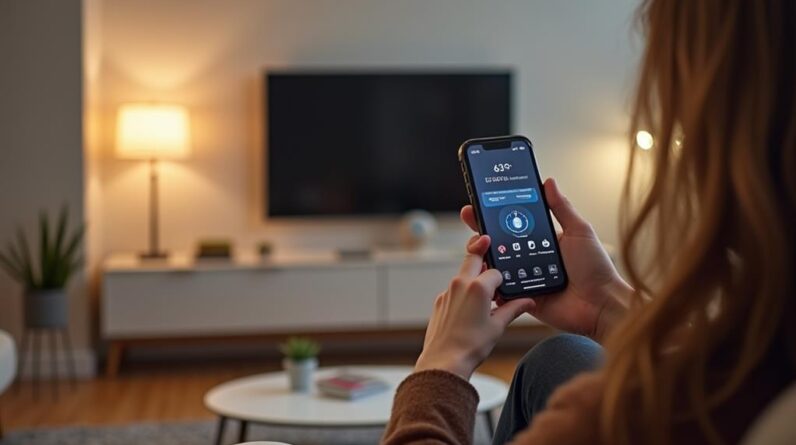
– Even just a few years ago,
smart homes were not a thing. Or, they were, but you had to be a total nerd or super rich to have one. Now everything's different. If you have an Amazon Echo, you have the beginning of a smart home. If you have any appliance
you can turn on or off from your phone, you have
part of a smart home. It turns out that smart
homes are really easy to start building, now a days. And you can do some pretty
cool things with them, like control your lights,
your heating, your TV. You're often more limited by what would be dumb and excessive, than
what you actually want to do.
So, how do you get started? We're gonna go to my
apartment and I'm going to show you what you can
do for under $200 dollars to make you're home a little bit smarter. (snappy upbeat music) Alright, so the first place
to start is a voice assistant. I'll admit, these can be kinda creepy, but once you start to get used to them, they actually turn into a
fun and pretty convenient way to control your stuff. I chose the Google Home Mini. It's $49 but they're on sale all the time, so don't pay that much.
Obviously, you can use
this to look stuff up, or play music or podcasts,
but I mostly use mine to turn my lights and air
conditioner on and off. I could just use a button
or do it in my phone, as I see a lot more
convenient a lot of the time, especially if I'm on my way out the door or going to bed. Now, we're going to get
into the smart lights and how I turned a dumb air conditioner into a smart one, but before I do that, I want to talk about how all these devices are talking to each other.
'Cause there's a lot going on and it can get pretty confusing. (energetic music) You're probably familiar
with Bluetooth and Wi-fi. Bluetooth is great for
things like fitness trackers, headphones, mice and keyboards. And Wi-fi is great for,
well, bringing internet to your laptop, smartphone,
smart tv, and so on.
But they're using different
gagets for a reason. They're designed to do different things. Bluetooth is pretty slow
at transferring data and it can't travel very far, but it doesn't use a ton of power. Wi-fi is really fast
and can travel farther, but it does use a ton of power. There's really only one distinction that you have to remember. Bluetooth gadgets usually aren't
connected to the internet, so, unless you connect
them to some kind of hub, you can't control them while
you're out of the home. Where things get more complicated is when you get deeper
into smart home tech. Turns out, Bluetooth and Wi-fi just don't fit the bill for everything. Neither are great for
things like lightbulbs that need to be reached at
the way far end of the house. For that, there are other
wireless technologies, like Zigbee and Z-wave. These use really tiny amounts of energy. So, you can have sensors sitting around on battery power for months. But that means they're super
slow at transmitting data. They're also built to travel much farther, because their messages can jump around.
So, one lightbulb can
transmit an off command to the next one and the
next one, and so on. What this means is that,
if you're buying something, you'll have to make sure it
actually works with your stuff. One of the things that
you're gonna need a hub for is smart lights. I think the best smart
lights are from Philips Hue and you'll want to start
with their starter kit, because it comes with that
hub, which is gonna hook up to your router, so that
everything can talk together.
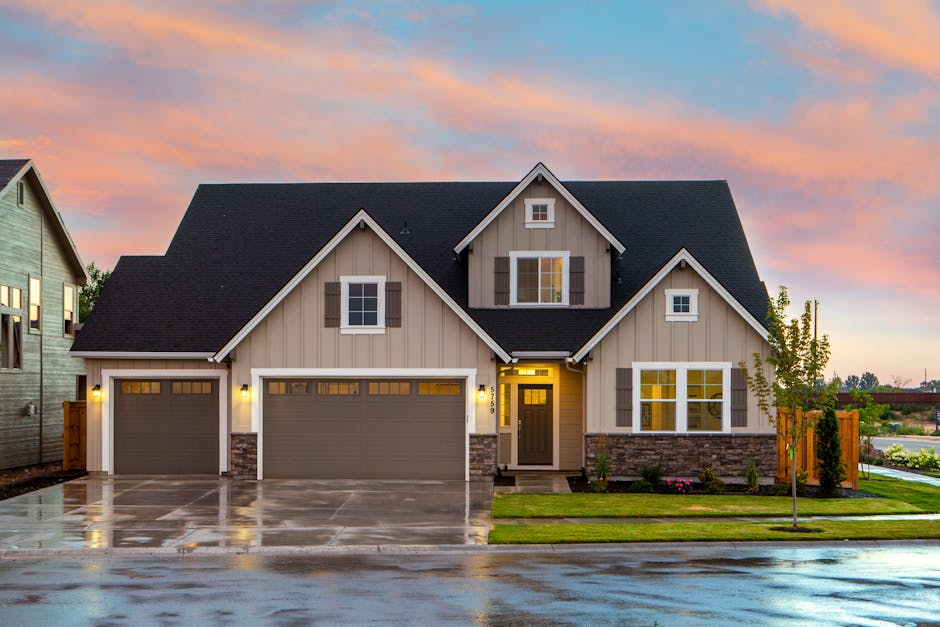
The starter kit costs $64 dollars. It comes with a bunch of
bulbs and, while Philips has a bunch of, like,
color changing stuff, too. Don't worry about that. It's just more than you need. Smart lights are great for just a bunch of little conveniences. You can have them automatically
come on when you come home or when the sun goes down. I bet you have at least
one speaker in your house that isn't smart or could be smarter. For $35 you can plug a
Chromecast Audio into it and it will be able to do a lot more. So, I have this two speaker system here. It's old, it's from 2004 or something, but if I hook the Chromecast Audio up by pluging into the AUX
port, I can now control it from my phone or do this, I can say "Hey Google, play Childish
Gambino on those speakers".
[Google Voice] – Alright,
Donald Glover from Spotify… – And there we go. – [Google Voice] –
Playing on both speakers. ("This is America"
playing on the speakers) – Alright, so the last
thing is a smart plug. It's basically just an individual outlet that you can plug something
into and then turn on and off. I got TP-link's Kasa, you can get a two pack of them for $45 bucks. So, these things are really
cool because they're all at once really versitle, but also really limited, because they literally just
turn things on and off.
So, I connected my two
air conditioners to them, so that I can control
them and turn them on when I'm coming home from work. Now, some caveats. They are literally just
killing power to these things and turning them back on. They can't control anything at all. So, my air conditioner, it turns out, will automatically resume it's prior state when it turns back on. So, because of that, this
works out really well, because, I can just flip
it on and it's just gonna start making things cool again. You can use this for things
like fans and lamps, too, that are just gonna automatically
resume their same state. So, that's it, that's
just about $200 dollars. But there's a lot more you can do with the stuff you already
have, if you want to get a little bit more complicated.
Using apps in your phone,
you can hook things together to do even more. There's a service called
IFTTT, If This Than That. That's really good for this. So, for instance, I set
up a rule saying that if it's over 80 degrees in
Brooklyn, my air conditioner will automatically turn
on and you can do that for all kinds of stuff, with your lights, with your speakers. Now, I really think the best way to get into your smart home is to do
it piece by piece, like this. Buy one thing, see how it works for you, and then get whatever
else makes sense next. Now, I went with the Google Home Mini, but it might make more sense for you to go with Alexa, or if you
use tons of Apple devices, to go with the HomeKit system.
Just start with whatever works for you and then add on, bit by
bit, and before you know it, you're gonna have a much smarter home. Hey, thanks for watching. If you like what we're
doing, you might like what our friends at Life Noggin are doing. They make a bunch of animations,
explainging stuff like, who is winning the global tech race?.
As an Amazon Associate I earn from qualifying purchases.



